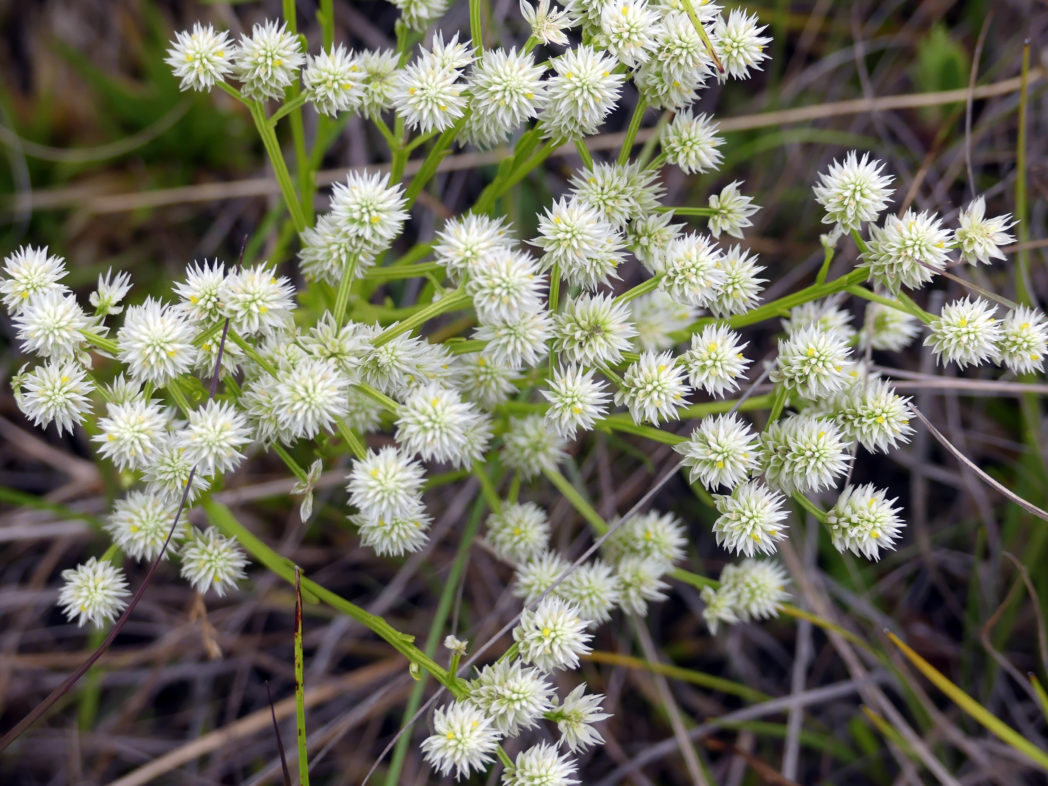Baldwin’s milkwort
Pictured above: Baldwin’s milkwort (Polygala balduinii) by Stacey Matrazzo. Click on terms for botanical definitions. View post as a PDF.
Baldwin’s milkwort (Polygala balduinii) is one of only a few white milkworts found in Florida. It typically blooms spring through fall and occurs naturally in wet pine flatwoods, marshes and coastal swales.
Flowers are small, white or greenish and borne in dense cymes atop branched stems. Sepals are large, lateral and petal-like. Leaves are lanceolate with pointy tips. They are alternately arranged and become reduced and sessile as they ascend the stem. Seeds are borne in a capsule.
The genus name Polygala comes from the Greek polys, which means “many or much,” and gala, meaning “milk.” It is so-named because it was once believed that the presence of Polygala species in cow fields would result in higher milk production (hence the common name of “milkwort” for both the genus and family.) The species epithet balduinii pays homage to William Baldwin, an American physician and botanist who made significant contributions to the field of botany in the late 1700s and early 1800s.
Family: Polygalaceae (Milkwort family)
Native range: Nearly throughout
To see where natural populations of Baldwin’s milkwort have been vouchered, visit florida.plantatlas.usf.edu.
Hardiness: Zones 8A–11
Lifespan: Annual or biennial (may act as perennial in South Florida)
Soil: Moist to wet
Exposure: Full sun
Growth habit: 1–3’ tall
Baldwin’s milkwort is generally not for sale commercially. Visit a sunny open wetland to see it!
For more information on other Polygala species, see these resources:

